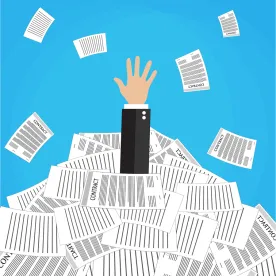A federal district court in New York has struck down a significant portion of the recently promulgated Final Rule issued by the U.S. Department of Labor (DOL) regarding the standard for establishing joint-employer liability under the Fair Labor Standards Act (FLSA). State of New York v. Scalia, 2020 U.S. Dist. LEXIS 163498 (S.D.N.Y. Sept. 8, 2020). As a result, at least for now in the Southern District of New York, the joint-employer analysis will continue to be guided by the varying standards that have developed among the federal courts over the years.
Background
Since 1939, regulations interpreting the FLSA have recognized that two or more “employers” can be jointly and severally liable for a single employee’s hours worked under the Act. In April 2019, the DOL issued a Notice of Proposed Rulemaking (NPRM) to update its interpretation of the standard for establishing joint-employer liability under the FLSA. Following a review and comment period, in January 2020, the DOL announced a Final Rule, effectively adopting the rule as proposed in the NPRM, and that Final Rule became effective in March 2020.
Final Rule
Under the Final Rule, the DOL stated that the proper focus is on “the potential joint employer’s exercise of control over the terms and conditions of the employee’s work.”
Derived from the decision of the U.S. Court of Appeals for the Ninth Circuit in Bonnette v. California Health & Welfare Agency, 704 F.2d 1465 (9th Cir. 1983), the new Final Rule adopted a four-factor balancing test assessing whether the purported joint employer:
-
Hires or fires the employee;
-
Supervises and controls the employee’s work schedules or conditions of employment;
-
Determines the employee’s rate and method of payment; and
-
Maintains the employee’s employment records.
Moreover, the DOL concluded that an entity may qualify as a joint employer only if it actually “[takes actions] with respect to the employee’s terms and conditions of employment,” rather than merely possessing the “theoretical ability” to do so.
The Suit
In February 2020, attorneys general on behalf of 18 states filed suit seeking to have the Final Rule vacated. These plaintiffs claimed that the Final Rule was promulgated in violation of the Administrative Procedure Act (APA), improperly narrowed who is considered a joint employer, and will harm their states in multiple ways, including by lowering wages, decreasing compliance with worker protection laws; reducing their tax revenue, and increasing the administrative and enforcement costs for their comparable state law equivalents to the FLSA.
Court’s Decision
The New York district court agreed with the plaintiffs, granting summary judgment in their favor and abrogating the more controversial portion of the Final Rule.
In the Final Rule, the DOL recognized that joint employment may exist in two basic organizational formats: “horizontal” joint employment, where the employee has employment relationships with two or more employers and the employers are sufficiently associated or related with respect to the employee such that they jointly employ the employee; and “vertical” joint employment, where the employee has an employment relationship with one employer (such as a staffing agency or subcontractor) that provides work for a second employer and, as a practical reality, the employee is employed by that second employer as well.
The court took no issue with the Final Rule as it pertains to horizontal joint employer liability, but concluded that the Final Rule’s interpretation of vertical joint employer liability conflicts with the broad definitions of “employer,” “employee,” and “employ” set forth in the FLSA. Those definitions must be construed in tandem with each other, the court held, so in establishing the standard for (vertical) joint employer liability, the Final Rule’s reliance solely on the Act’s definition of “employer” was improper. In addition, contrary to the Final Rule, there is no distinction between whether an entity is an “employer” and whether it is a “joint employer,” the court concluded; an entity is an employer or it is not. In these respects, the Final Rule contradicts the text of the FLSA, the DOL’s own previous interpretations, and longstanding caselaw, without adequately explaining or justifying why.
Moreover, the court agreed that the plaintiffs had sufficiently demonstrated that the Final Rule will increase the enforcement costs of their analogous state-based laws, as the states with broader standards for joint employer liability will continue to enforce those diverging standards and will have to increase the number of investigators and person-hours necessary to do so. Even those states whose wage and hour laws generally follow the FLSA will have to expend additional time and money on re-training employees responsible for enforcing and administering the DOL’s new interpretation of joint employer liability.
Further, the court held that the Final Rule’s test for joint employer liability is impermissibly narrow. The Final Rule’s adoption of a standard requiring actual, rather than reserved or theoretical, control over the employee essentially mirrors the common law standard for employment liability, a standard that the FLSA expressly rejects. While the factors demonstrating control (such as the ability to supervise, discipline, or discharge) are relevant, they are not a necessary condition to establishing joint employment, held the court.
The Takeaway
The head of the DOL’s Wage and Hour Division has stated that, notwithstanding the court’s decision, the Department believes that its joint employment interpretation is correct. Whether the DOL will appeal the court’s decision remains to be seen.



 />i
/>i

